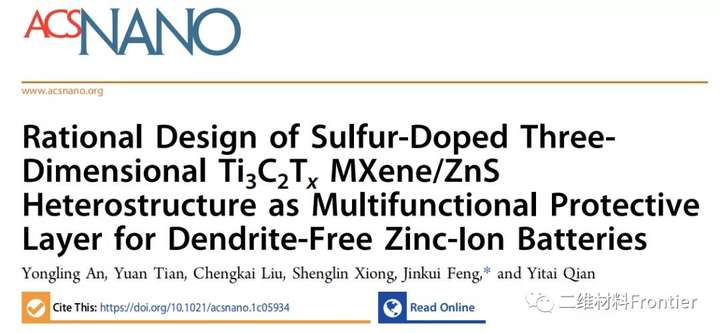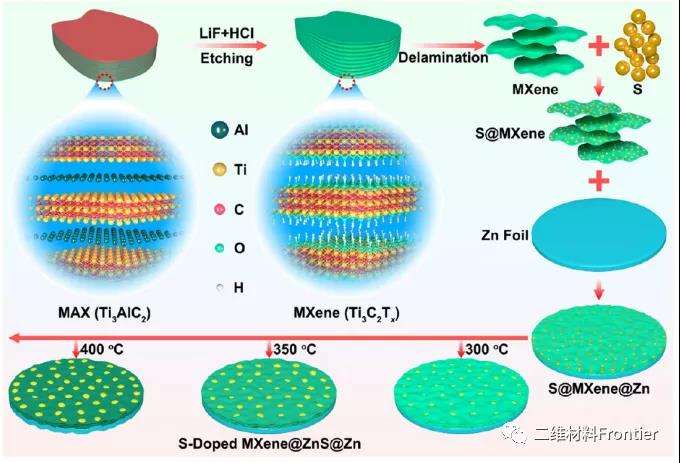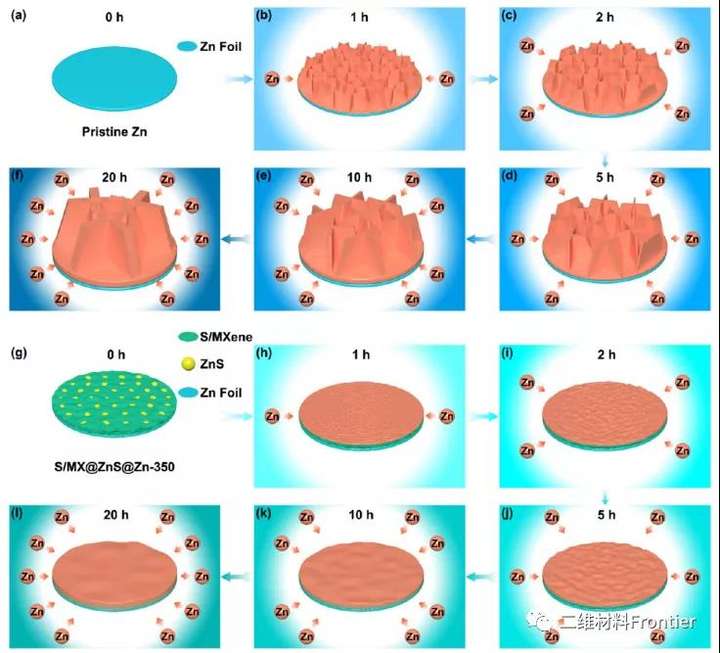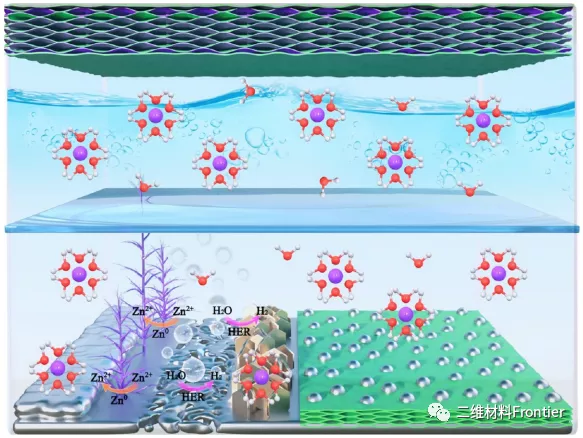
hotline:
17715390137
Tel/Wechat:
18101240246 (Technology)
0512-68565571
Email:mxenes@163.com (Sales Engineer)bkxc.bonnie@gmail.com
Scan the code to follow or search the official account on WeChat:
2D Materials Fronrier After paying attention,
click on the lower right corner to contact us,
Enter enterprise WeChat.
Professional Services Online


1. Article overview
Zinc metal has the advantages of large theoretical capacity, great working potential, abundant resources, intrinsic safety, and low cost. It is considered to be one of the most promising anode materials for water batteries. However, the harm caused by dendrite growth and side reactions hinders its practical application. Aiming at the above problems, a Zn anode heterogeneous protective layer composed of electronically conductive sulfur-doped three-dimensional MXene and ion-conductive ZnS was designed and constructed. Sulfur doping and the formation of three-dimensional structures on MXene are simultaneously achieved during the ZnS generation process. Sulfur-doped 3D MXene can effectively uniform electric field distribution, reduce local current density, and ease volume changes. ZnS can inhibit side reactions, promote the uniform distribution of Zn2+, and accelerate the migration of Zn2+. Therefore, a stable non-dendritic zinc anode is obtained, with obvious cycle stability up to 1600 h and rate performance. The relationship between the structure of the protective layer and the performance of the zinc anode was discussed. The protective zinc anode and the 3D MXene@MnO2 cathode doped with suspended sulfur can be used to obtain a full battery with high energy, long cycle life and high rate. This work provides direction for the design of practical zinc anode and other metal-based battery systems.





| Reminder: Beijing Beike New Material Technology Co., Ltd. supplies products only for scientific research, not for humans |
| All rights reserved © 2019 beijing beike new material Technology Co., Ltd 京ICP备16054715-2号 |